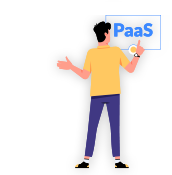Document management refers to the entire process from the production or receipt of a document to its archiving. It is an increasingly common practice to entrust software systems with the delicate task of carrying out all the activities involved in the document lifecycle . The increasing popularity of personal productivity applications and collaboration tools, the regulatory push (e.g., mandatory electronic invoicing) and the urgent need for smart working in recent months have led to the creation of widespread offices and the need to organize digital archives to make information available and easily usable.
Document storage: an overview of security
Pre important requirement for document storage is to rely on technologies that protect data. With the sharp increase in the use of remote work caused by the pandemic, hackers have focused their attention on targeted attacks on individuals through tools used daily. These include e-mail.
Cybercriminals have, in fact, exploited the situation of collective unease and the inevitable lowering of defenses. A situation caused mainly by theenlargement of the corporate perimeter, for which traditional perimeter protection measures were ineffective. Suffice it to say that, according to the Clusit Report, in the first half of this year, ransomware (the malware that renders data unusable until a ransom is paid) activity increased by 350 percent over the same period last year.
Document storage software: securing corporate information assets
Taking advantage of document archiving software means being able to tap into a vast digital repository that is always up-to-date and instantly shareable with colleagues, partners and co-workers employed in the same office or miles away.
Such an archive can result from the dematerialization of documents already held and/or by using native digital documents, i.e., inserted into a purely digital workflow that never needs to resort to printing.
In both cases, document archiving software is responsible for preserving the authenticity as well as the immediate findability (usually through the use of keywords and metadata) of each digital document: a file that has the characteristics of immodifiability and integrity guaranteed by digital signature and time stamp that certify the author and the time of its creation, respectively.
Through theassignment of an identification code and a protocol signature by the software tool, it will be possible to uniquely characterize each file and send it for preservation. By means of ad hoc technologies, it will then be possible to track access and changes that will be made, by whom, when, and so on. All features necessary to do preservation according to current regulations.
Security by design: why it is necessary
The concept of security by design lies at the heart of software engineering and is about writing applications anticipating the possibility of attack and designing them so that the impact of any successful attack is minimized.
Article 25 of the GDPR (the European General Data Privacy Regulation) states that the principle of security by design must be followed: both when defining the means of data processing (when designing solutions) and in relation to when the processing itself takes place. The data controller must be able to rely on appropriate organizational and technical measures to ensure basic protections. The ultimate goal to which one must strive is, in practice, to design a process that has no vulnerabilities.
Security by design for proper document storage
Sheltering the enterprise from cyber threats and information loss should increasingly converge on comprehensive security by design, integrated with the various business processes. This, of course, has to take into account the complexity of digital ecosystems (which inevitably see their boundaries expanding by bringing all the players in the supply chain to which they belong closer together) as well as, of course, the users and the areas in which they carry out their activities.
Referring specifically to the storage process, it is premised that employing software solutions, all the more so if in the cloud, taking advantage of PaaS - Platform as a service, first of all eliminates the problems of protecting physical spaces.
In addition, if document archiving software has a high degree of flexibility, it will present identity and access management settings (to manage user profiles enabled for consultation). Not only that: through easily customizable solutions, it is possible to quickly set access modes even for users without a technical background, and to set selective policies for certain files that contain sensitive data. For example, making them available only in read mode, not allowing them to be downloaded, etc.
The support, then, of automated systems and artificial intelligence capabilities help gather all the information that decision makers need to discover any anomalies and resort to response actions in case of problems, threats or, unfortunately, actual attacks.









